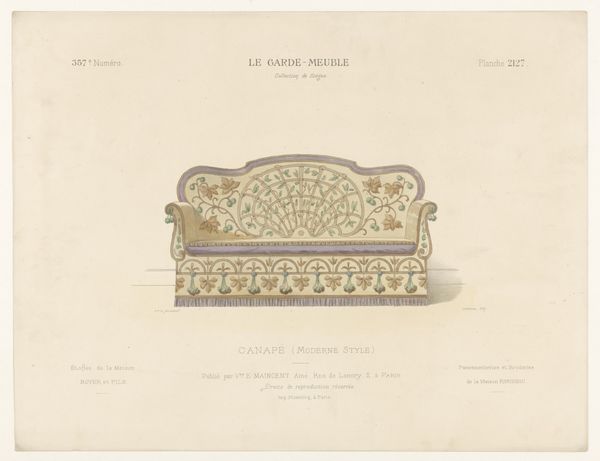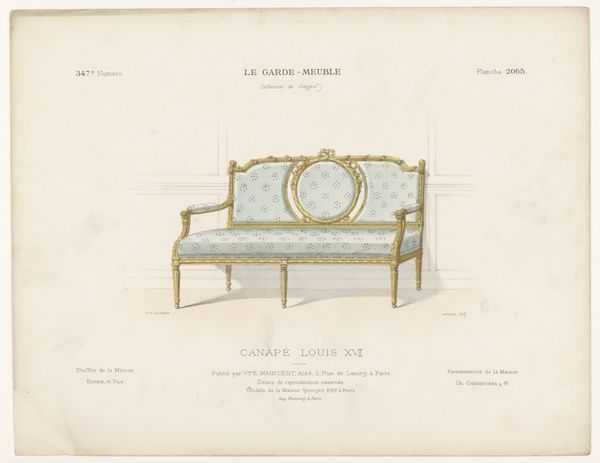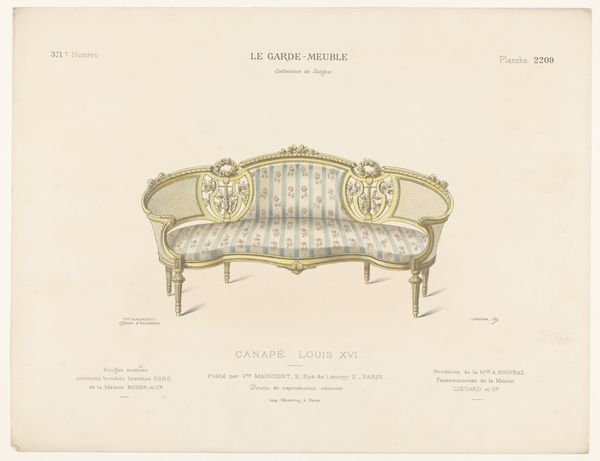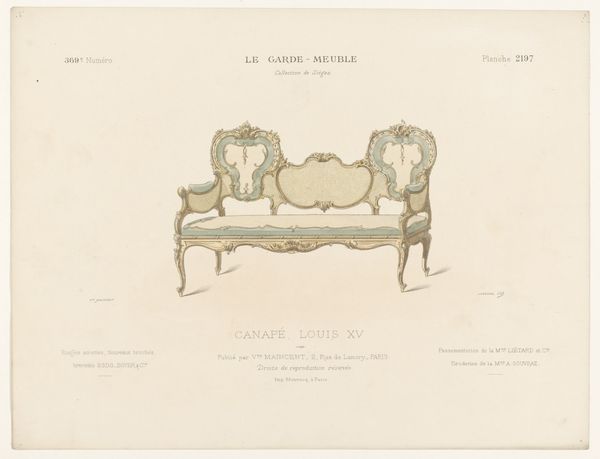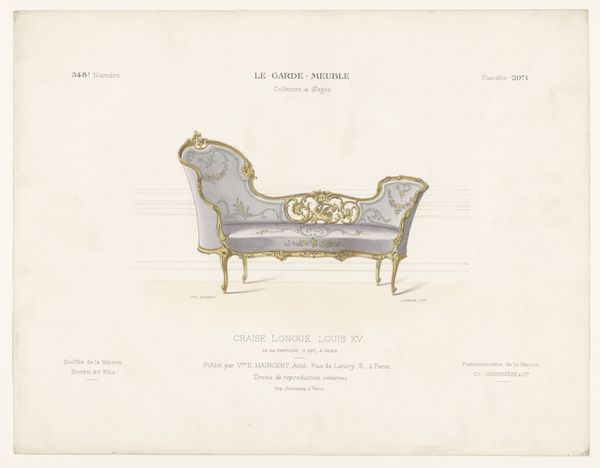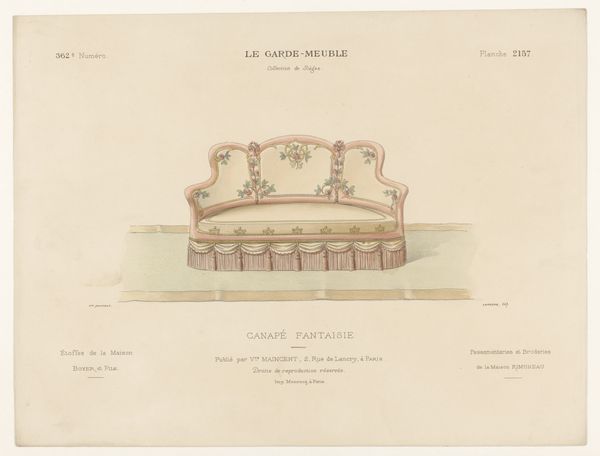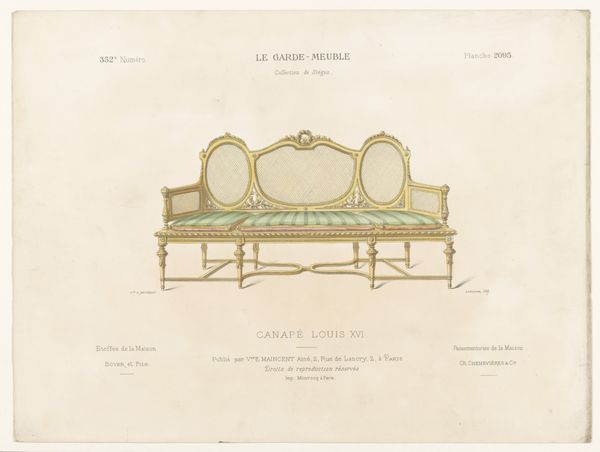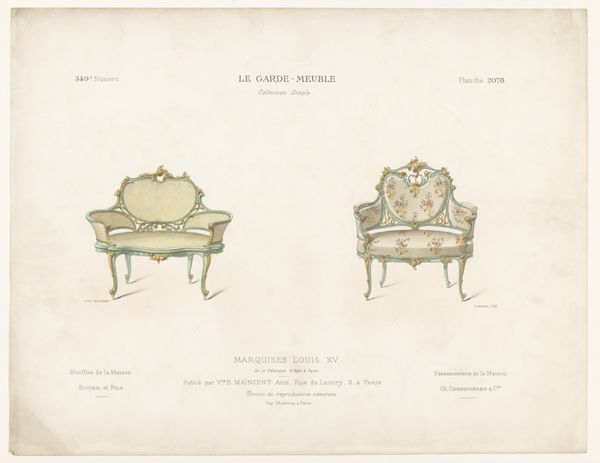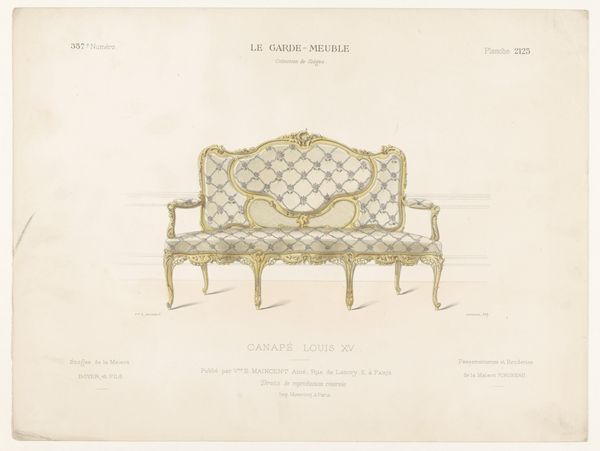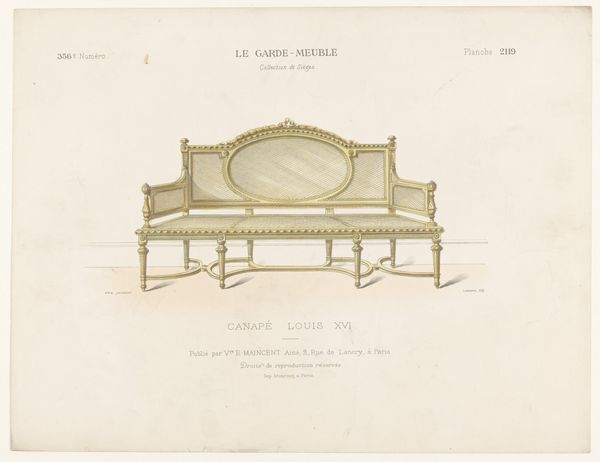
drawing, print, paper, watercolor
#
drawing
#
art-nouveau
# print
#
paper
#
watercolor
#
orientalism
#
ink colored
#
sketchbook drawing
#
watercolour illustration
#
decorative-art
Dimensions: height 275 mm, width 358 mm
Copyright: Rijks Museum: Open Domain
Curator: Oh, this image, "Canapé", captivates me! The decorative print, watercolor, and ink drawing likely dates from between 1895 and 1935, revealing a beautiful confluence of Art Nouveau and Orientalist styles. Editor: It’s incredibly dainty. Almost saccharine, isn’t it? Like something Marie Antoinette would have lounged upon before things…escalated. The pastel colors and delicate ornamentation suggest such aristocratic indulgence. Curator: I think that is a modern association that may overlook a more complex visual culture at play here. The canapé isn't just a decorative object. Think about what a seat can signify. What cultural performances might it stage? Editor: What do you mean? Curator: Consider the way "Canapé" synthesizes French design sensibilities with exotic motifs, revealing Orientalism's allure for Western audiences, specifically regarding gender. What does it convey when these sensibilities mingle so prominently? Editor: Right, so the design incorporates cultural symbols, subtly conveying themes of luxury, leisure, and maybe even escapism. Do you mean it's not so innocuous as it appears, considering its provenance within the colonial era? Curator: Exactly! The choice of delicate watercolor on paper might intentionally soften cultural difference for European tastes while reaffirming hierarchical power dynamics through conspicuous consumption. Editor: The historical context really reshapes my perspective here. Initially, it felt simply pretty, yet understanding the image as an artifact rooted within colonial history prompts thoughts of power, trade, and cultural appropriation. The title alone, "Grand Canapé Fantaisie", reveals much! Curator: Absolutely. The artist probably wanted this image of a comfortable chair to spark an imaginary leap towards opulent life and exotic geographies. Understanding the forces that formed that design gives it additional potency. Editor: Indeed. A closer examination encourages a reassessment, which may be an example of aesthetic beauty serving ideological goals, even subtly! Curator: And those sorts of subtle forces influence aesthetic judgments and behavior even today. Thank you, this exchange was truly insightful! Editor: The pleasure was mine. I think it is amazing what art and the decorative arts can tell us about ourselves and how we perceive others.
Comments
No comments
Be the first to comment and join the conversation on the ultimate creative platform.
